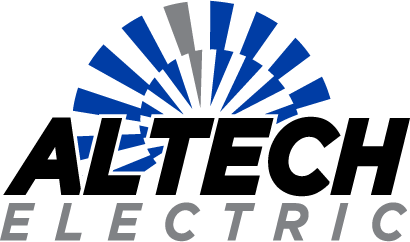9 Reasons Why You Should Make the Switch to LED Lighting in Your Home
In recent years, LED (Light Emitting Diode) lighting has become increasingly popular, and for good reason. Swapping out traditional incandescent or fluorescent lights for LEDs can bring numerous benefits to your home.
1. Energy Efficiency
One of the most significant advantages of LED lighting is its energy efficiency. LEDs use significantly less energy compared to traditional lighting options. While incandescent bulbs convert only about 10% of the energy they consume into light, with the rest being wasted as heat, LEDs convert approximately 90% of their energy into light. This means that LEDs require less power to produce the same amount of light, leading to substantial energy savings. According to the U.S. Department of Energy, residential LEDs use at least 75% less energy and last up to 25 times longer than incandescent lighting
2. Cost Savings
The energy efficiency of LEDs translates directly into cost savings on your electricity bills. Although the initial cost of LED bulbs is higher than traditional bulbs, the long-term savings are significant. LEDs have a much longer lifespan, often lasting between 25,000 to 50,000 hours, compared to the 1,000 hours of incandescent bulbs. This means fewer replacements and lower maintenance costs over time. Additionally, the reduced energy consumption of LEDs can lead to lower utility bills, making them a cost-effective choice in the long run.
3. Environmental Benefits
Switching to LED lighting is also beneficial for the environment. LEDs have a smaller carbon footprint compared to traditional lighting options. Their energy efficiency means less electricity consumption, which in turn reduces greenhouse gas emissions from power plants. Moreover, LEDs do not contain hazardous materials like mercury, which is found in compact fluorescent lamps (CFLs) and can be harmful to the environment if not disposed of properly. By choosing LEDs, you are contributing to a more sustainable and eco-friendly future.
4. Improved Safety
LEDs are safer to use than traditional lighting options. Incandescent bulbs generate a lot of heat, which can pose a fire hazard, especially if they come into contact with flammable materials. LEDs, on the other hand, emit very little heat, reducing the risk of burns and fires. Additionally, LEDs operate on low-voltage electrical systems, which are generally safer in the event of an electrical fault.
5. Durability and Longevity
LEDs are known for their durability and long lifespan. Unlike incandescent bulbs, which have a fragile filament that can break easily, LEDs are solid-state lights. This makes them more resistant to shocks and vibrations. This durability also makes LEDs ideal for use in various settings, including outdoor environments where they may be exposed to harsh weather conditions.
6. Instant Illumination and Dimming Capabilities
LEDs provide instant illumination, reaching full brightness immediately when switched on. This is in contrast to some traditional lighting options, such as CFLs, which can take a few moments to warm up and reach their full brightness. Additionally, many LED bulbs are compatible with dimmer switches, allowing you to adjust the brightness to suit your needs and create the desired ambiance in your home.
7. Design Flexibility
LEDs offer greater design flexibility compared to traditional lighting options. They are available in a wide range of shapes, sizes, and colors, making it easy to find the perfect lighting solution for any space in your home. LEDs can be used for various applications, from task lighting in the kitchen to ambient lighting in the living room. Their compact size also allows for innovative lighting designs, such as under-cabinet lighting and recessed down lights.
8. Enhanced Light Quality
LEDs provide superior light quality compared to traditional bulbs. They offer better color rendering, meaning they can more accurately represent the colors of objects under their light. This makes LEDs an excellent choice for areas where color accuracy is important, such as in art studios or makeup rooms. Additionally, LEDs are available in a range of color temperatures, from warm white to cool white, allowing you to choose the perfect lighting tone for each room in your home.
9. Smart Lighting Integration
Many modern LED bulbs are compatible with smart home systems, allowing you to control your lighting remotely using a smartphone or voice commands. This integration offers added convenience and energy savings, as you can easily turn off lights when they are not needed or set schedules to ensure lights are only on when necessary. Smart LED bulbs also often come with additional features, such as color-changing capabilities and programmable scenes, enhancing the functionality and versatility of your home lighting.
Final Thoughts
Swapping out traditional lights for LEDs in your home is a decision that brings numerous benefits. From energy efficiency and cost savings to environmental sustainability and improved safety, LEDs offer a superior lighting solution for modern homes. Their durability, design flexibility, and enhanced light quality make them a versatile choice for any space. By making the switch to LED lighting, you can enjoy a brighter, more efficient, and eco-friendly home.
